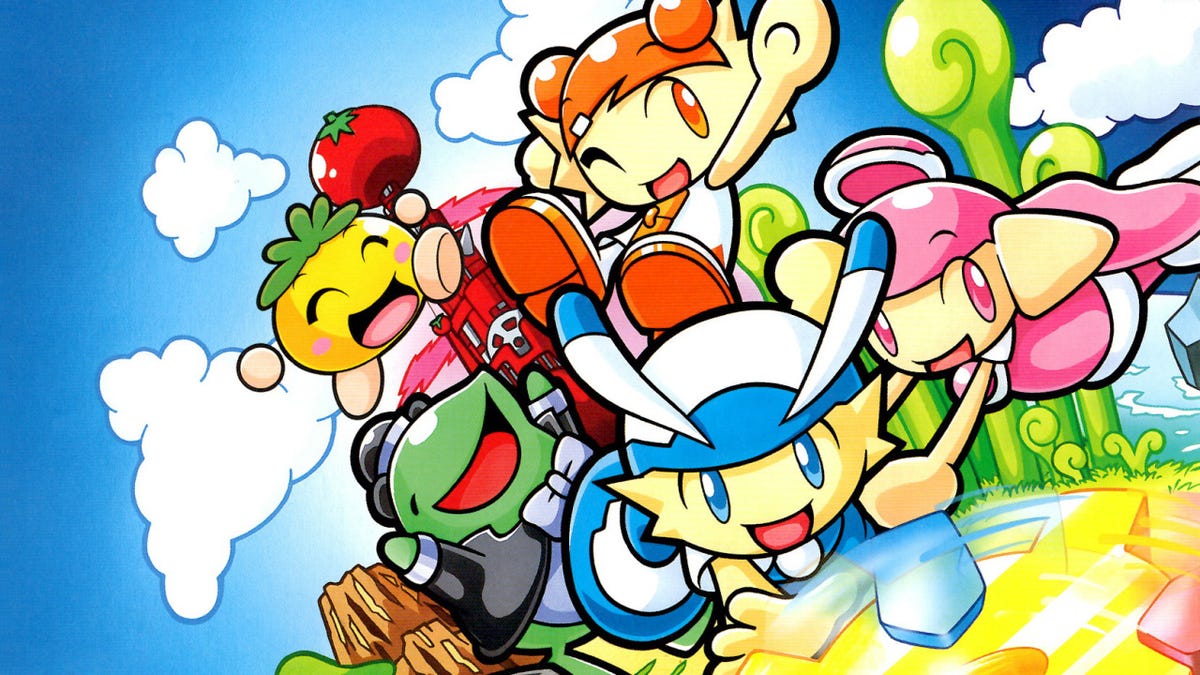The obscure 2002 Game Boy Advance RPG Tomato Adventure is finally playable in English thanks to a fan translation patch released last week, arriving nearly 20 years since the role-playing game first came out in Japan.
Despite launching in the early aughts, Tomato Adventure never left its home country. It’s a shame, as this handheld gem was developed by none other than AlphaDream, a studio founded in 2000 by several ex-Square staffers. That name may not immediately ring a bell—second-party studios often get lost in the shuffle as they create games for much larger companies—but I imagine you’re familiar with Super Mario RPG.
Yep, before forming AlphaDream, staffers like Tomato Adventure director Chihiro Fujioka previously worked on the Super Nintendo classic Super Mario RPG: Legend of the Seven Stars. And shortly after establishing AlphaDream, they would return to the Mushroom Kingdom to almost exclusively develop every game in Nintendo’s Mario & Luigi series of portable RPGs.
That’s one hefty pedigree! But sadly, AlphaDream would go bankrupt in 2019.
Tomato Adventure itself is exactly what you’d expect from an AlphaDream role-playing game. Snappy one-liners and slapstick comedy punctuate a bizarre storyline about outcast kids who dislike tomatoes in a land known as the Ketchup Kingdom. Its gorgeous levels hide numerous environmental puzzles and side-quests. And the traditional turn-based battle structure is jazzed up a bit with timing-based attacks that make every decision a more active affair than just spamming a single button.
G/O Media may get a commission
Unlike in Super Mario RPG, however, where most attacks could be improved with similar timing, dealing boosted damage in Tomato Adventure revolves around a slew of unique weapons known as gimmicks. The mid-battle mini-games presented by these gimmicks range from stopping a moving cursor in a desired area to memorizing a series of symbols.
Furthermore, each gimmick has a range of seven difficulty levels that you can decide on between battles. The higher the difficulty, the more damage the gimmick does when you nail its mini-game in battle. This, combined with a separate super move meter that charges as you win these mini-games and depletes entirely on a failure, makes every battle a unique balancing act between how confident you are in your reflexes and memory versus how much you’re willing to risk against them.
I’ve spent several hours with Tomato Adventure over the last week, and I have to say, it’s just as delightful as any of AlphaDream’s Mario-based adventures. The now-defunct studio had a way of injecting everything it created with a sense of lovable whimsy without coming off as overly saccharine. AlphaDream constructed elaborate worlds that felt alive and compelling, and it’s bittersweet to only now, after it’s gone, experience what its developers were able to do with an entirely original concept.
During last summer’s Nintendo “Gigaleak” madness, fans were ecstatic to find an early, Game Boy Color version of Tomato Adventure known as Gimmick Land among the countless leaked files, and the care put into this fan-made translation of the Game Boy Advance RPG shows just how highly its creators think of AlphaDream’s work. The studio may no longer be around, but the unique footprint it left on the role-playing genre has never been more obvious.
Kotaku
Source link
Related Post:
- Huge Fallout 2 Mod Finally Translated From Russian Into English
- Rare Street Fighter II Anime Finally Translated Into English
- LEGO Super Mario Co-Op Shown Off In New Trailer With Mario And Luigi
- Why Was Among Us Translated Into Irish? – Feature
- Lego Super Mario’s Luigi set: release date, price, and impressions
- Lego Super Mario Adds Luigi Two-Player Mode
- Adding Luigi and multiplayer, Lego Mario finally feels like it’s reaching its true potential
- Luigi’s Mansion is now Mario’s Mansion, thanks to a ROM hack
- Sakurai Recalls Smash Bros. Melee’s E3 2001 Appearance In Newly-Translated Report
- Best Mario Music Ever: Our Top 10 Mario Songs – Super Mario Playlist
